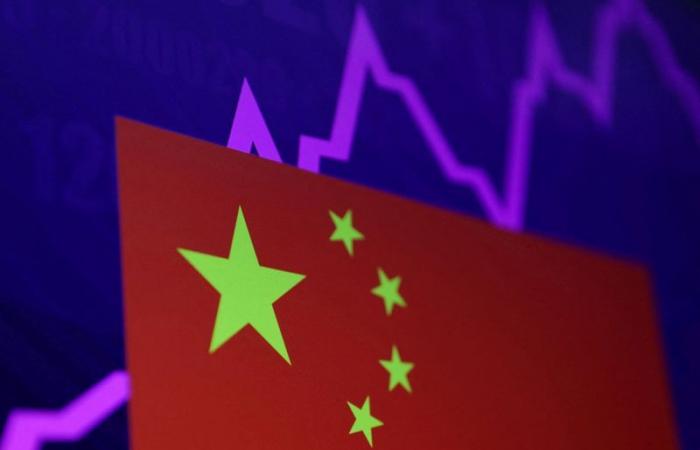A preview of the day ahead in Asian markets.
Attention in Asia on Thursday is expected to focus on Chinese stocks, and whether the previous day’s sharp fall continues, as well as the U.S. dollar, which is on its longest streak of gains in more than two years.
The economic calendar is light, with only wholesale inflation and bank lending figures from Japan, and trade data from the Philippines, on deck.
Currency and rates markets could be boosted by Bank of Japan Deputy Governor Ryozo Himino and Reserve Bank of Australia Deputy Governor Sarah Hunter due to speak at separate events at Japan and Australia, respectively.
The foreign exchange market, and the US dollar in particular, is increasingly present in the minds of investors on the continent.
The New Zealand dollar fell 1.3% on Wednesday after the country’s central bank cut interest rates by 50 basis points and indicated it would further ease policy in the coming months. The kiwi has weakened 5% this month, making it the world’s worst performing currency this month.
The greenback advanced against a basket of major currencies on Wednesday for the eighth day, its best streak since March-April 2022, as the continued resilience of the US economy attracts flows into US assets and forces investors to rethink their US interest rate outlook.
Demand for U.S. assets from Asia is also strong.
Thursday could be a good test for Chinese markets, after Wednesday’s reality check. After soaring 40% in just six days, China’s benchmark stock indices fell 7% on Wednesday, recording their biggest one-day loss since February 2020.
Will this pullback provide a more attractive entry point for investors who missed the initial boost? If so, the rally could continue, but a second day of losses could suggest investors need more information from Beijing.
China’s Finance Ministry will detail its plans to revive the economy at a news conference on Saturday, a sign that Beijing may be ready to implement more forceful policies to revive growth.
The People’s Bank of China, meanwhile, has moved the yuan away from the 7.00 per dollar level, at least for now. Tuesday’s fix of 7.0709/$ was 0.9% higher than the previous fix, marking the biggest one-day rise since May 2022.
Wednesday’s fix was a bit lower, but still comfortably above pre-Golden Week holiday levels.
In Japan, inflationary pressures are expected to ease in September, with annual wholesale price inflation falling to 2.3% from 2.5% in August. This would be the lowest rate since April.
The monthly rate of deflation is expected to accelerate from -0.2% to -0.3%, which would be the fastest rate of monthly decline since May last year.
Here are the main developments that could steer the markets on Thursday:
– Wholesale inflation in Japan (September)
– BOJ Deputy Governor Ryozo Himino speaks.
– RBA Deputy Governor Sarah Hunter speaks






